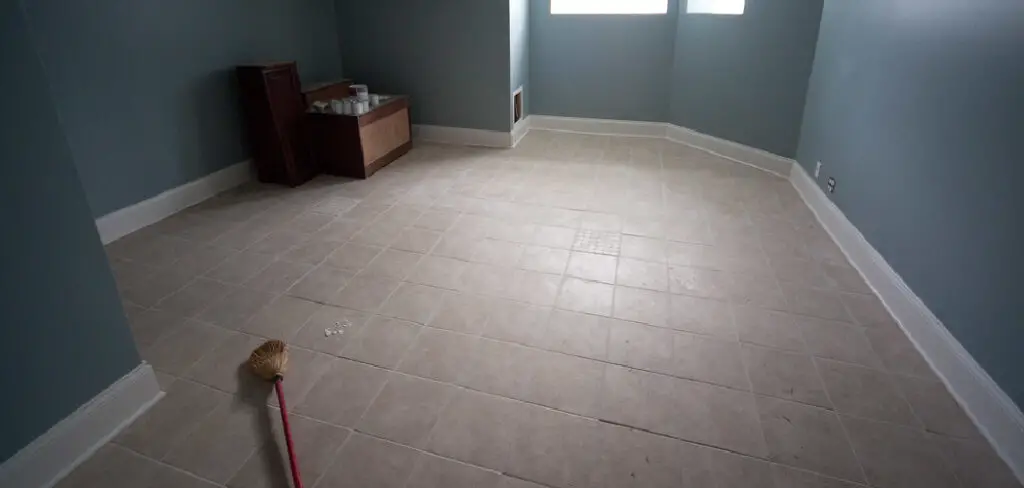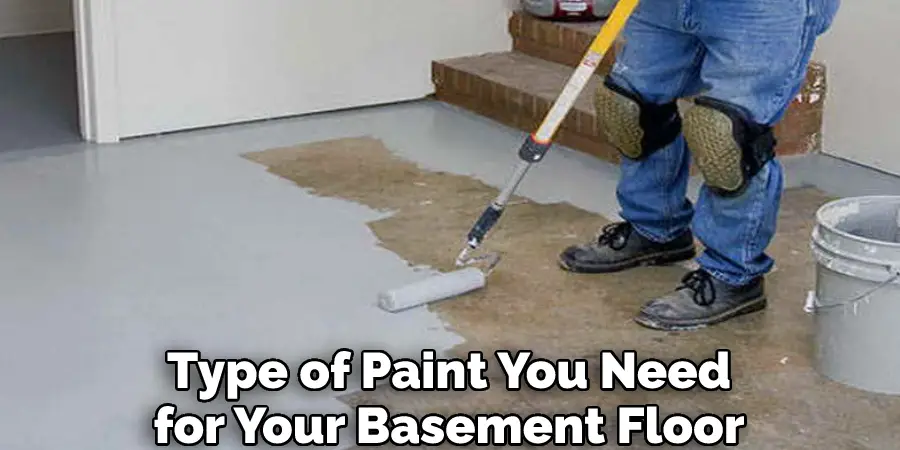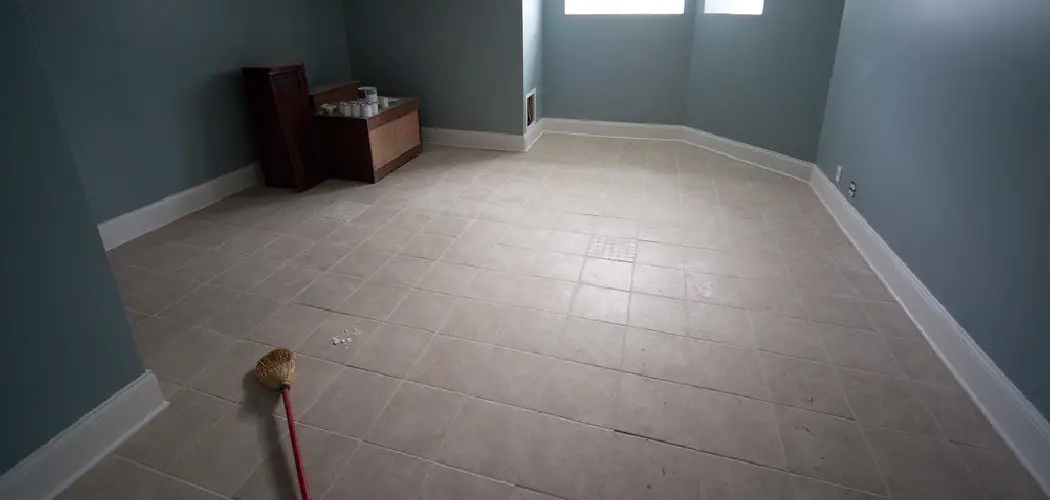Most homeowners don’t give much thought to their basement floor until they are faced with the task of painting it. If you find yourself in this position, you may wonder how much it will cost to paint your basement floor. The answer, of course, depends on several factors. In this blog post, we will break down how much does it cost to paint a basement floor.

Can You Paint a Basement Floor?
Basements are often one of the most neglected areas of a home. They can be dark, dank, and damp, making them the perfect place to store holiday decorations and old boxes of junk. However, if you’re considering painting your basement floor, there are a few things you should keep in mind. First, make sure that the floor is clean and free of debris.
Second, choose a paint that is specifically designed for concrete surfaces. Third, apply a primer before painting to help the paint adhere to the surface. Finally, be sure to allow plenty of time for the paint to dry before walking on it. With a little bit of preparation, you can transform your basement from a dull storage space into a bright and cheery living area.
Why Should You Paint a Basement Floor?
A basement can be a great place to use for extra storage space or to add extra room to your home. However, many basements are unfinished and have concrete floors. Painting a basement floor is a quick and easy way to update the space and make it more livable. There are several reasons why you should paint a basement floor.
First, the paint will help to protect the concrete from water damage and staining. Second, it will make the space more comfortable by disguising any imperfections in the concrete. Third, the painting will brighten up the space and make it feel more welcoming. Finally, it is a relatively inexpensive and easy way to update the look of a basement.
How Much Does It Cost to Paint a Basement Floor
1. Consider the Size of Your Basement
The size of your basement is one of the most important factors when calculating how much it will cost to paint your basement floor. Larger basements may require more materials and labor, resulting in a higher expense than smaller basements.
2. Type of Paint Needed
The type of paint you need for your basement floor depends on the condition of the floor and how much use it will get. For example, if your basement is going to be used for heavy traffic or storage purposes, you may want to select a more durable paint option, such as epoxy or garage-style floor coatings.
If you are looking for something that looks nice but doesn’t need to stand up to a lot of wear and tear, a more basic interior paint would be suitable.

3. Prep Work
Depending on the condition of your basement floor, you may need to do some prep work before painting. This could include cleaning, patching any damages in the concrete, or applying a primer. The cost of these supplies and materials must be considered when estimating how much it will cost to paint your basement floor.
4. Labor Costs
Finally, the labor costs of painting a basement floor must also be considered. This is typically where most of your expenses will come from unless you can do the project yourself. The labor cost will depend on how long it takes to complete the job and how experienced your painter is.
5. Hire a Professional Painter(optional)
If you don’t have the time or expertise to paint your basement floor yourself, hiring a professional painter is an option that should be taken into consideration. Professional painters typically charge an hourly rate plus the cost of materials, so it is important to get several estimates before making a decision.
Ultimately, how much does it cost to paint a basement floor will depend on how much work is involved, the type of paint used, and how much labor is required. By considering all of these factors and getting multiple estimates from qualified professionals, you can get an accurate idea of how much it will cost for your specific project.
Contact a local painting contractor for more detailed information about how to paint a basement floor. With the right preparation and supplies, you can achieve great results and have a beautiful basement floor that stands out from the rest!
What You Need to Know Before Painting a Basement Floor
Before painting your basement floor, it’s important to take a few key factors into consideration. First, the type of paint you choose will need to be able to withstand high levels of traffic and abuse.
Basements are often used as storage areas, laundry rooms, or playrooms, so the paint you select should be able to stand up to frequent cleaning and foot traffic.

Second, consider the type of finish you want for your floor. A glossy finish will make cleaning easier but may show scratches more easily. A matte or eggshell finish may not be as easy to clean but will help to hide imperfections.
Finally, ensure you adequately prepare your floor’s surface before painting. Any cracks or holes should be filled with a cement patching compound, and the entire surface should be sanded to provide a smooth base for the paint.
With a little bit of careful planning, you can achieve professional-looking results when you paint your basement floor.
How to Choose the Right Paint for a Basement Floor
If you’re considering painting your basement floor, you’ll need to choose the right type of paint to ensure a durable, long-lasting finish. Start by washing the surface to remove dirt, oil, or grease. Once the floor is dry, apply a primer and let it dry completely before proceeding to paint.
For the actual paint job, use floor paint that is specifically designed for concrete surfaces. These paints are typically made with epoxy or urethane resins, which offer excellent durability and resistance to staining and fading. When applying the paint, always use a brush or roller with an extension handle to reach the center of the floor without bending down.
Once the paint is dry, apply two coats of a clear sealer to protect the finish from wear and tear. With these simple tips, you’ll be able to choose the right paint for a beautiful and long-lasting finish on your basement floor.
The Pros and Cons of Painting Your Basement Floor
When it comes to painting your basement floor, there are a few things to consider. First of all, basement floors are often damp, which can cause paint to peel or be bubbly.
Second, basement floors are often cold, making the painting process less comfortable. However, there are also a few advantages to painting your basement floor. For example, it can help brighten the space and make it feel more inviting.

Additionally, painting can help to protect the floor from dirt and stains. Overall, the decision of whether or not to paint your basement floor is a personal one. Both options have pros and cons, so weigh your options carefully before making a decision.
3 Things to Consider Before Painting your Basement Floor
If you’re planning on painting your basement floor, you should take a few things into account first. Here are five of the most important:
1. What is the condition of the floor? If the floor is in good condition, painting it will be a fairly simple process. However, if there are cracks or other damage, you’ll need to repair them before painting. Otherwise, the paint will simply accentuate the imperfections.
2. How long will it take to dry? Depending on the type of paint you use and the temperature and humidity of your basement, it could take up to 24 hours for the floor to dry completely. So make sure you have plenty of time before starting the project.
3. How durable does it need to be? If your basement floor sees a lot of traffic, you’ll want to use more durable paint. However, if it’s mostly used for storage or other purposes where foot traffic isn’t an issue, a less durable paint will suffice.
By considering all of these factors, you can ensure that your basement floor painting project goes smoothly from start to finish.
What Factors Influence the Cost of Painting a Basement Floor?
The cost of painting a basement floor will depend on several factors, including the size of the basement, the type of paint used, and the job’s complexity. For example, a small basement with simple accessibility may only require a few gallons of paint.
At the same time, a large basement with multiple rooms and poor ventilation will require more paint and may also need primer. The type of paint also affects the cost – high-quality latex paint will be more expensive than lower-quality options, but it will also last longer and provide better coverage.
Finally, the difficulty in painting the basement floor will affect the overall cost. A straightforward job with no obstacles to overcome will be less expensive than a job that requires scaffolding or other special accommodations.
By considering all of these factors, homeowners can better understand what to expect when they receive estimates from painters.
Conclusion
Painting the floor is a great option if you’re looking for an inexpensive way to freshen up your basement. Not only does it cost less than other basement finishing options, but it can also be done relatively quickly and easily.

Plus, if you’re planning on selling your home in the future, painting your basement floor is a great way to increase its resale value. Thanks for reading our post about how much does it cost to paint a basement floor.


